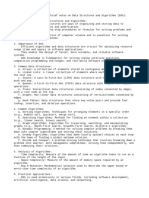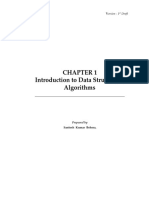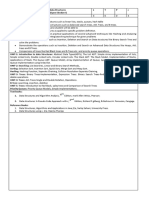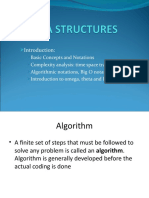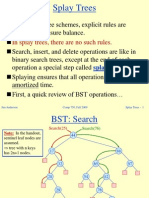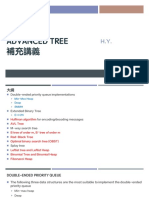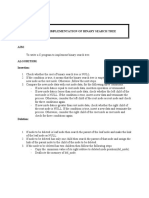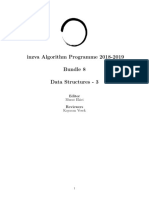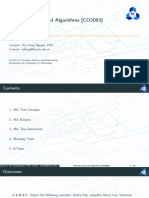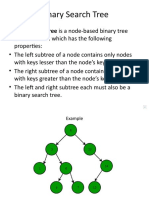0% found this document useful (0 votes)
20 views3 pagesDSA Notes
This document provides an overview of data structures and algorithms, including definitions, operations, and performance analysis. It covers various data structures such as arrays, stacks, queues, lists, trees, heaps, and hash tables, along with their respective operations and complexities. Additionally, it discusses sorting algorithms and collision handling techniques in hash tables.
Uploaded by
jeetameta44Copyright
© © All Rights Reserved
We take content rights seriously. If you suspect this is your content, claim it here.
Available Formats
Download as PDF, TXT or read online on Scribd
0% found this document useful (0 votes)
20 views3 pagesDSA Notes
This document provides an overview of data structures and algorithms, including definitions, operations, and performance analysis. It covers various data structures such as arrays, stacks, queues, lists, trees, heaps, and hash tables, along with their respective operations and complexities. Additionally, it discusses sorting algorithms and collision handling techniques in hash tables.
Uploaded by
jeetameta44Copyright
© © All Rights Reserved
We take content rights seriously. If you suspect this is your content, claim it here.
Available Formats
Download as PDF, TXT or read online on Scribd
/ 3



















